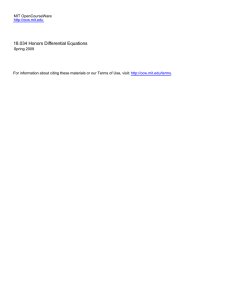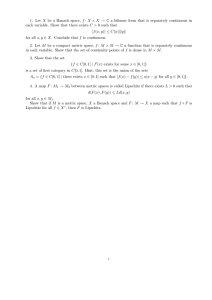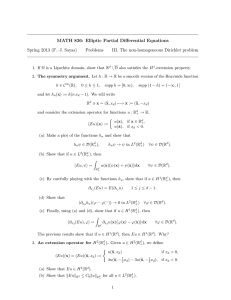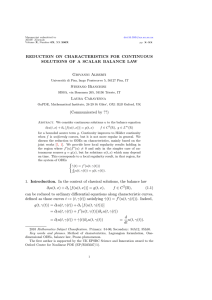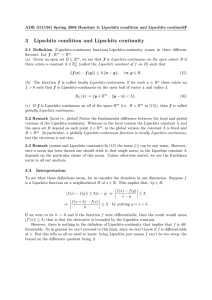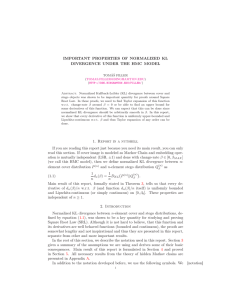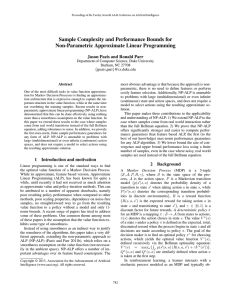18.034 Honors Differential Equations
advertisement
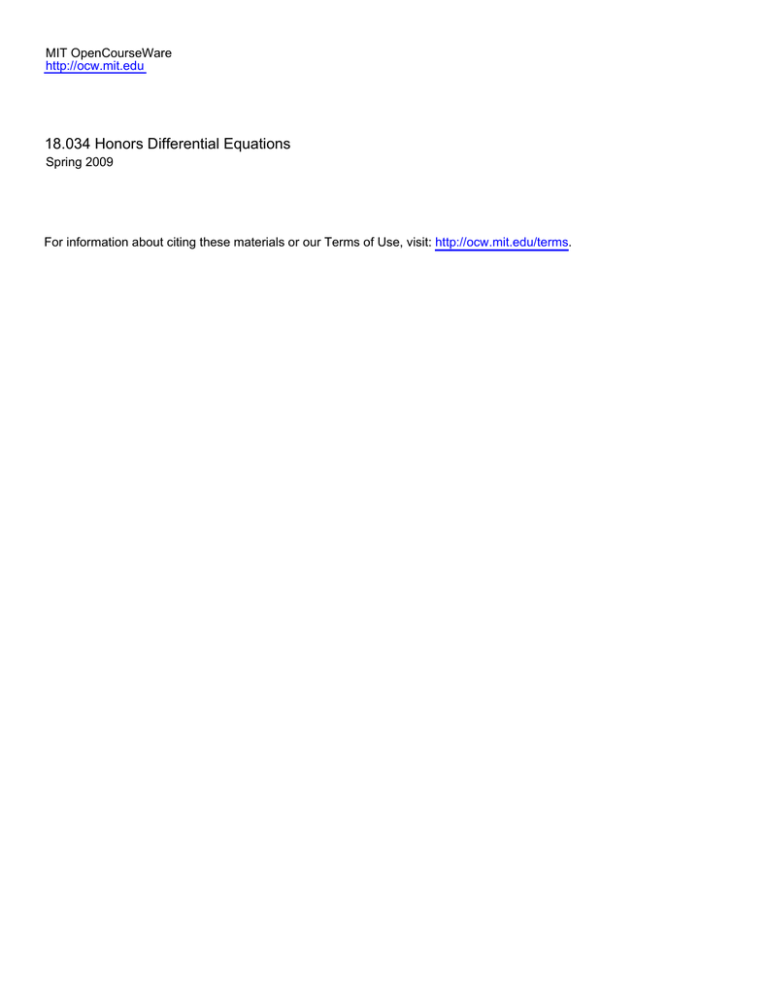
MIT OpenCourseWare http://ocw.mit.edu 18.034 Honors Differential Equations Spring 2009 For information about citing these materials or our Terms of Use, visit: http://ocw.mit.edu/terms. 18.034 Recitation: March 10th, 2009 1. Let I ⊂ R be an interval and recall that a function f : I → R is said to be Lipschitz on I if there is a constant C such that |f (x) − f (y)| ≤ C|x − y| for all x, y ∈ I. (a) Show that if f is Lipschitz on I, then f ∈ C(I). (b) Show that if f is differentiable on I with bounded derivative, then f is Lipschitz on I. (c) Show that f (x) = |x| is Lipschitz on R. (d) Show that f (x) = ex is not Lipschitz on R. 2. (Birkhoff-Rota, p. 62, #3) Solve y ′′ + 3y ′ + 2y = x3 for the initial conditions y ′ (0) = y(0) = 0. 3. (Birkhoff-Rota, p. 62, #4) Show that any second-order linear inhomogeneous equation that has both x2 and sin2 x as solutions must have a singular point at the origin. 4. Describe the dominant behavior as t → ∞ of any solution u to (D + 3)(D2 + 1)5 u = 640 cos t. Hint: the function U0 (t) = t5 (6 sin t − 2 cos t) 5! solves the equation. 1
